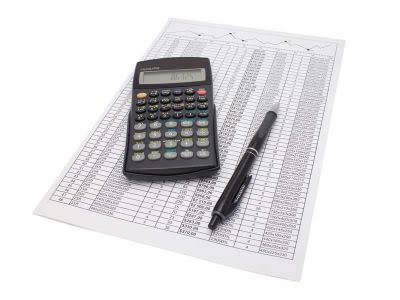Content
- Types of checking accounts: Find out which of the 12 checking account types is right for you
- Use Baremetrics to track your T accounts
- Business checking account
- How to Post Journal Entries to T-Accounts or Ledger Accounts
- Video Explanation of T Accounts
- Quickly look over the account to find the side which has the bigger total.
- T Account Examples

The record is placed on the credit side of the Accounts Receivable T-account across from the January 10 record. Another key element to understanding the general ledger, and the third step in the accounting cycle, is how to calculate balances in ledger accounts. Note that this example has only one debit account and one credit account, which is considered a simple entry. A compound entry is when there is more than one account listed under the debit and/or credit column of a journal entry (as seen in the following). Accountants use special forms called journals to keep track of their business transactions. A journal is the first place information is entered into the accounting system.
Manually maintaining a T account system is time-intensive and expensive. However, it is a mandatory system of accounting required by governments and financial institutions. It is, however, very easy, efficient, and cost-effective to use software solutions such as TallyPrime to implement T account bookkeeping in a business. You notice there are already figures in Accounts Payable, and the new record is placed directly underneath the January 5 record. The record is placed on the debit side of the Accounts Receivable T-account underneath the January 10 record. The record is placed on the credit side of the Service Revenue T-account underneath the January 17 record.
Types of checking accounts: Find out which of the 12 checking account types is right for you
Then, the two involved accounts are your cash account and your revenue account. The double-entry system helps prevent errors, while the T accounts can be logically ordered to make it easy to find specific transactions quickly. Below is a short video that will help explain how T Accounts are used to keep track of revenues and expenses on the income statement. The “Balance b/f” https://www.bookstime.com/articles/accounting indicates that the debit side is greater than the credit side by $19,100, and that we have $19,100 in our bank account at the end of May (the closing balance of the account). The Balance b/f shown above is the actual closing balance of the bank account (a debit balance). A T-account is a colloquial word for a set of financial records that use double-entry accounting.

A debit, on the other hand, adds to an expense account, while a credit deducts from it. For instance, when you receive a payment from a customer, you would always debit your cash account, because the customer payment that you deposited increases your bank account balance. For example, let’s say you have a credit card with a 0% introductory APR on balance transfers for 18 months, with a balance transfer deadline of 60 days. That means you must transfer any balances within about two months of your application being approved in order to qualify for the introductory interest rate. Any balances transferred 61 days after account opening and beyond will accrue interest at the card’s normal ongoing APR (which will generally be much higher). A checkless checking account comes with a debit card but doesn’t offer checks.
Use Baremetrics to track your T accounts
Let’s look at the journal entries for Printing Plus and post each of those entries to their respective T-accounts. The standard T-account structure starts with the heading including the account name. The left column is always the debit column while the right column is always the credit column.

This balance is transferred to the Interest Receivable account in the debit column on the adjusted trial balance. Accumulated Depreciation–Equipment ($75), Salaries Payable ($1,500), Unearned Revenue ($3,400), Service Revenue ($10,100), and Interest Revenue ($140) all have credit final balances in their T-accounts. These credit balances would transfer to the credit column on the adjusted trial balance. As you can see, there is one ledger account for Cash and another for Common Stock. Cash is labeled account number 101 because it is an asset account type. The date of January 3, 2019, is in the far left column, and a description of the transaction follows in the next column.
Business checking account
The unadjusted trial balance in this section includes accounts before they have been adjusted. As you see in step 6 of the accounting cycle, we create another trial balance that is adjusted (see The Adjustment Process). Regardless of your method, T-accounts are great ways t accounts to understand how transactions affect various financial statements created from the general ledger. Let’s say you bought $1,000 worth of inventory to sell to future customers. Using the double-entry accounting method, you know this transaction has affected two accounts.
You may have to meet certain balance requirements to open a premium checking account, though. A traditional checking account is your everyday standard account at brick-and-mortar banks. Finding the right type of account will depend on what you value most in a checking account, from high interest rates to cash-back back rewards. The salon had previously used cash basis accounting to prepare its financial records but now considers switching to an accrual basis method. You have been tasked with determining if this transition is appropriate. If a trial balance is in balance, does this mean that all of the numbers are correct?
This is posted to the Cash T-account on the credit side beneath the January 14 transaction. Accounts Payable has a debit of $3,500 (payment in full for the Jan. 5 purchase). You notice there is already a credit in Accounts Payable, and the new record is placed directly across from the January 5 record. It is a good idea to familiarize yourself with the type of information companies report each year.
“Payments made previously (before 2024) and those made from now on will count toward these maximum forgiveness timeframes,” the Education Department notes online. But Buchanan offered one possible explanation, saying that generally, online calculators don’t make assumptions about the future rollout of regulatory changes before they actually happen. “It’s possible that the rollout of the other components could get delayed or tied up in litigation.” Whether you want to pay less interest or earn more rewards, the right card’s out there.
If that’s not the case, make sure to double-check your books as you’ve probably made an accounting error along the way. On February 15th, the company XYZ invoices a client for $600 worth of service. The payment terms of the invoice call for payment to be received in the following 20 days. Now, every business has its own chart of accounts that depends on the industry they are a part of and the financial activities they lead. T accounts are used in a bookkeeping method known as double-entry bookkeeping.
The adjusted trial balance is the key point to ensure all debits and credits are in the general ledger accounts balance before information is transferred to financial statements. Budgeting for employee salaries, revenue expectations, sales prices, expense reductions, and long-term growth strategies are all impacted by what is provided on the financial statements. For different accounts, debits and credits may translate to increases or decreases, but the debit side must always lie to the left of the T outline and the credit entries must be recorded on the right side. The major components of the balance sheet—assets, liabilities and shareholders’ equity (SE)—can be reflected in a T-account after any financial transaction occurs. Once all ledger accounts and their balances are recorded, the debit and credit columns on the adjusted trial balance are totaled to see if the figures in each column match. The final total in the debit column must be the same dollar amount that is determined in the final credit column.
Preparing an unadjusted trial balance is the fourth step in the accounting cycle. A trial balance is a list of all accounts in the general ledger that have nonzero balances. A trial balance is an important step in the accounting process, because it helps identify any computational errors throughout the first three steps in the cycle. Once all ledger accounts and their balances are recorded, the debit and credit columns on the trial balance are totaled to see if the figures in each column match each other. For example, if you determine that the final debit balance is $24,000 then the final credit balance in the trial balance must also be $24,000.